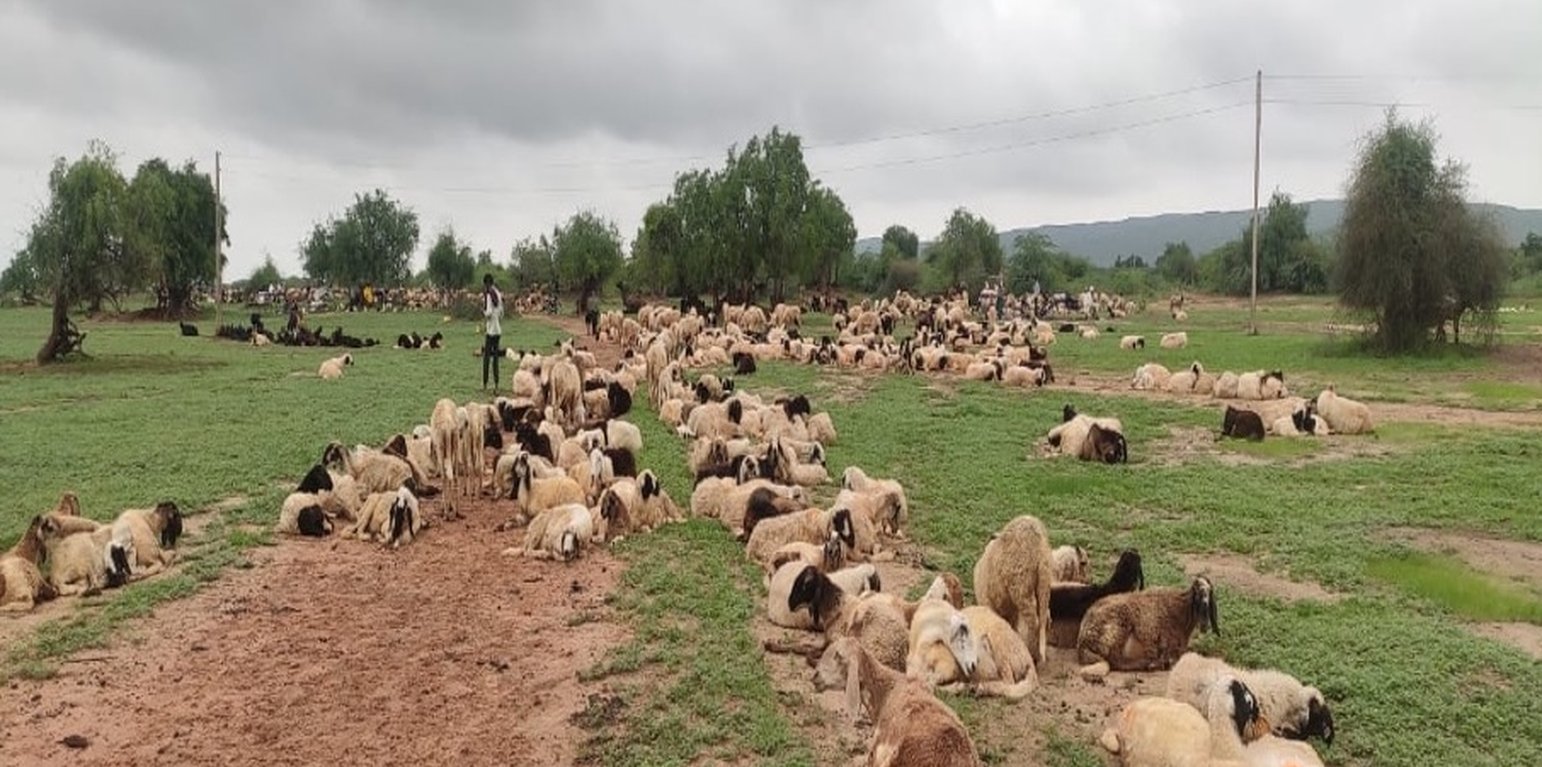



Overview
The initial project focused on 10 villages within Kutch District, Gujarat, Western India. Each of these villages developed 10 acres of associated common pastureland. In total, 100 acres were developed. The project offered local solutions to develop village wastelands (common term in India for degraded lands) into ecologically regenerated pasturelands. Village pastureland, developed in such manner was used for open and free grazing for livestock. This enhanced milk production thus generating income for village women and their families.
Process
MARAG formed a WPLMC (Women’s Pastureland Management Committee) in each village consisting of 10 members. Each WPLMC managed 10 acres of these common pasturelands in their respective villages. WPLMCs were trained and engaged in land mapping and demarcation through GPS, soil testing, land cleaning and land levelling, selection of native grass seeds, sowing of such grasses, and general maintenance and management of the land.
The rules and regulations for land management were determined by the WPLMCs. WPLMCs jointly decided to use 5 of 10 acres of each village gaucher (local term for pasture) to develop traditional grasses for small ruminants. Out of this, 2.5 acres were developed as fodder for large livestock and 2.5 acres were developed for drought tolerant species. Finally, the WPLMCs documented the regulation and use of pastureland and the responsibility of the management.
The following processes were employed for pastureland regeneration:
1.Silvipasture practice
2.Land treatment and afforestation
3.Reintroduction of traditional grass seeds.
4.Tapping of indigenous pastoral knowledge for grass development and breed conservation.
5.Forming and strengthening Women Pastureland Management Committees (WPLMC) at village level for project sustainability.
6.Using technology and capacity building of the WPLMC (e.g. GPS tools for land measuring, mobile app use for determining land fertility and water catchment etc.)
Livestock rearing can be a tool for the sustainable management of land, especially in arid and semiarid areas, by improving soil health, mitigating desertification and protecting the local ecosystem against invasive species. Sustanable livestock grazing breaks soil crust, increasing rain water absorpstion and converts grass into organic waste, increasing soil health and regenarating grasses by spreading seed.
Project Impact
1.Developed women leadership and management capacities as well as decision making throughout the project process.
2.Ownership of the pastureland development taken by pastoralist women.
3.Pastoralist women learning and using the smartphone for land mapping. Such knowledge is easily copied by other women in the village.
4.Traditional knowledge on pasture grasses women to deepen their knowledge on pasture management.
5.Biodiversity conservation through traditional knowledge.
6.Secured livelihood security and food sovereignty.
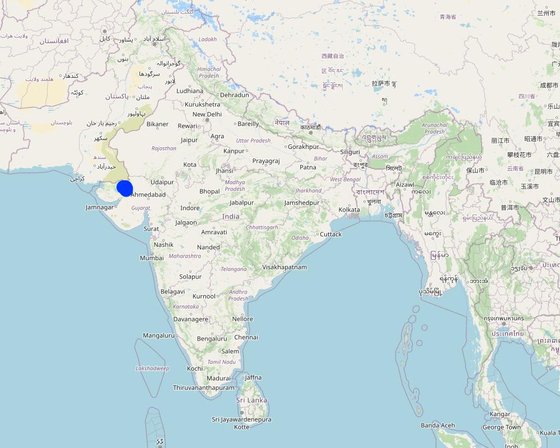
Localização: Dhabda village of Kutch District, Gujarat, Índia
Nº de sites de tecnologia analisados: 2-10 locais
Difusão da tecnologia: Aplicado em pontos específicos/concentrado numa pequena área
Em uma área permanentemente protegida?: Não
Data da implementação: 2022
Tipo de introdução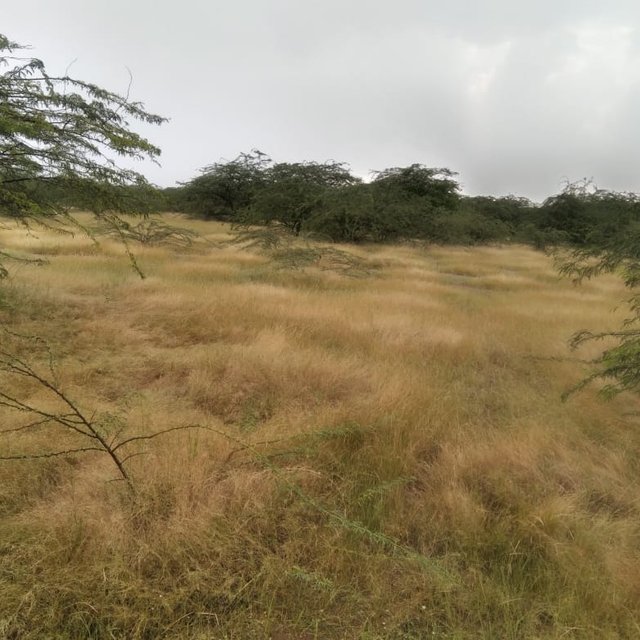
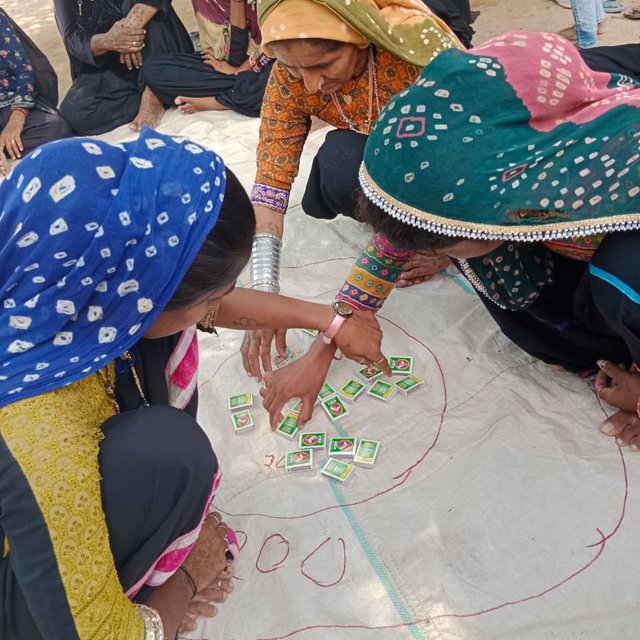

| Espécie | Contagem |
| búfalo | n.a. |
| gado - lácteo | n.a. |
| caprinos | n.a. |
| ovelhas | n.a. |
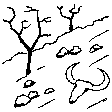



| Especifique a entrada | Unidade | Quantidade | Custos por unidade (INR) | Custos totais por entrada (INR) | % dos custos arcados pelos usuários da terra |
| Mão-de-obra | |||||
| GPS - mapping | Person-Day | 2,0 | 500,0 | 1000,0 | |
| Land leveling and preparation | Person | 15,0 | 550,0 | 8250,0 | 25,0 |
| Seed sowing | Person | 3,0 | 700,0 | 2100,0 | 100,0 |
| Tree plantation | Person | 12,0 | 300,0 | 3600,0 | 100,0 |
| Pastureland security guard | Person | 6,0 | 500,0 | 3000,0 | 50,0 |
| Fodder harvest | Person | 10,0 | 200,0 | 2000,0 | 40,0 |
| Equipamento | |||||
| Smart Phone | Piece | 1,0 | 14000,0 | 14000,0 | 100,0 |
| JCB (backhoe tractor for land levelling) | per Hour | 12,0 | 900,0 | 10800,0 | |
| Tractor | Per Hour | 25,0 | 700,0 | 17500,0 | |
| Tree Guard | Piece | 17,0 | 550,0 | 9350,0 | 30,0 |
| Fencing Material | Kg | 50,0 | 70,0 | 3500,0 | |
| Farming tools | Piece | 6,0 | 350,0 | 2100,0 | 50,0 |
| Material vegetal | |||||
| Grass seeds | Kg | 400,0 | 50,0 | 20000,0 | 30,0 |
| Tree saplings | No of plants | 125,0 | 50,0 | 6250,0 | 100,0 |
| Fertilizantes e biocidas | |||||
| Manure | No of Trolly | 3,0 | 1500,0 | 4500,0 | 100,0 |
| Biofertilizer | No of Trolly | 2,0 | 1500,0 | 3000,0 | 100,0 |
| Custos totais para a implantação da tecnologia | 110'950.0 | ||||
| Custos totais para o estabelecimento da Tecnologia em USD | 1'315.35 | ||||
| Especifique a entrada | Unidade | Quantidade | Custos por unidade (INR) | Custos totais por entrada (INR) | % dos custos arcados pelos usuários da terra |
| Mão-de-obra | |||||
| Trench repairing | per person | 7,0 | 500,0 | 3500,0 | 100,0 |
| Removal of invasive species | per person | 10,0 | 550,0 | 5500,0 | 100,0 |
| Seed sowing | per person | 3,0 | 700,0 | 2100,0 | 100,0 |
| Irrigation | per person | 3,0 | 350,0 | 1050,0 | 100,0 |
| Harvest | per person | 10,0 | 200,0 | 2000,0 | 100,0 |
| Equipamento | |||||
| Water charges (watering tree saplings) | No of tanks | 7,0 | 1200,0 | 8400,0 | |
| Material vegetal | |||||
| Seed ( fodder seeds, e.g. sorghum species) | kg | 400,0 | 50,0 | 20000,0 | |
| Tree saplings | no of plants | 20,0 | 50,0 | 1000,0 | 100,0 |
| Fertilizantes e biocidas | |||||
| Manure | per trolly | 3,0 | 1500,0 | 4500,0 | 100,0 |
| Bio fertilizer | per trolly | 2,0 | 1500,0 | 3000,0 | 100,0 |
| Outros | |||||
| Soil testing | per test | 1,0 | 1000,0 | 1000,0 | 100,0 |
| Custos totais para a manutenção da tecnologia | 52'050.0 | ||||
| Custos totais de manutenção da Tecnologia em USD | 617.07 | ||||
Quantidade anterior à GST: 0
Quantidade posterior à GST: 10%
Cultivation of indigenous fodder lead to qualitative fodder for livestock.
Quantidade anterior à GST: None
Quantidade posterior à GST: 75%
Priorly Wasteland was not managed at all. With the onset of the project , land is now managed and yields results for the people who live from the land. In this way land management is simplified and productive.
Food sovereignty of livestock improved.
The process of transforming wasteland to rich pasture by the community led to reviving as well as improving traditional knowledge of grass- and breed management and conservation.
Indigenous plants survive under extreme climatic conditions.